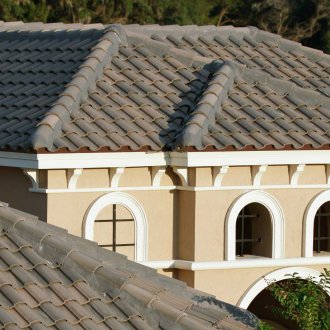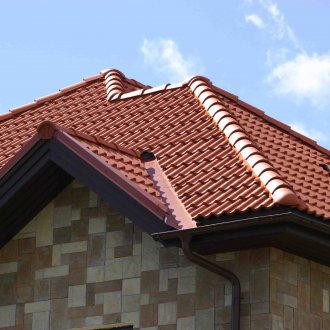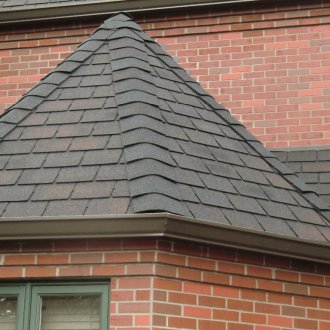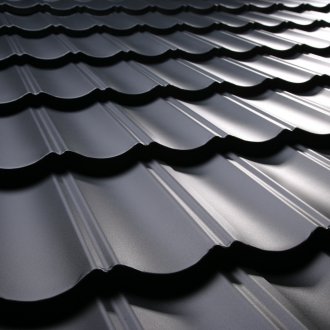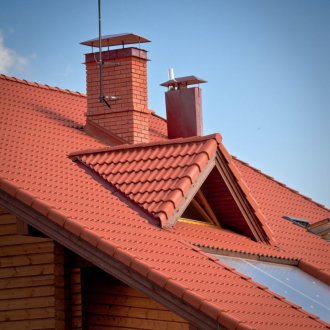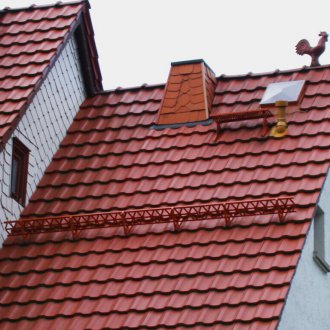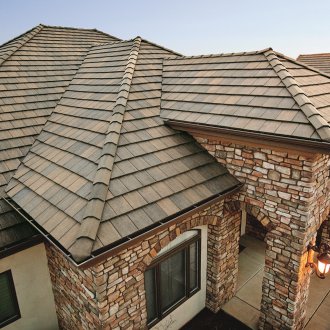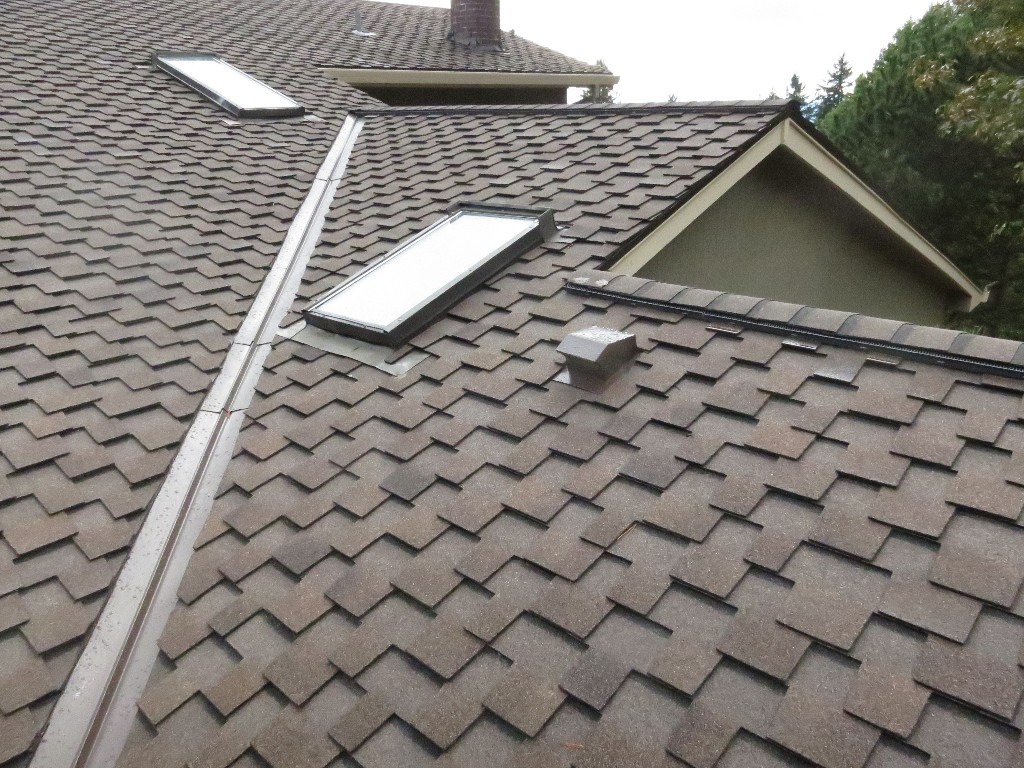Modern roof tiles: how to choose your option?
Content
Tiles as roofing materials have been known since antiquity. The calcined clay, from which it is produced, has all the properties necessary for a roof, except impact resistance. Currently, with the development of technology, analogues of clay tiles made of modern materials - bituminous (soft), composite and metal tiles have become famous. Modern types of tiles are strong, durable and possess such necessary qualities as flexibility and lightness. They also win in value. Manufacturers also add to them a wide range of colors and shapes, making this product indispensable in the market of roofing materials. If you are attracted to these types of roofing, you should learn more about them.
Clay tiles
Roasted clay tiles are still widely used. The roof covered with it has all the necessary qualities:
- strength;
- durability;
- water resistant
- frost resistance;
- biological resistance;
- environmental friendliness.
The roof of clay tiles does not require additional operating costs (painting), silent during rain, fireproof. Among the shortcomings can be noted a lot of weight, requiring strengthening the roof structure and a relatively high price.
Russia has a national standard for the production of ceramic tiles. When buying, make sure that the selected product meets this standard.
Clay tiles are available in all standard sizes and types, which allows you to cover any curly roof or pediment, reliably close the ridge, cover a place around pipes and ventilation.
Shingles
Composition of bituminous tiles
Bituminous tile is a type of soft roof. It is made of fiberglass, bitumen and granulate - basalt or slate powder.
- Fiberglass (fiberglass) is a fabric woven from glass threads and felted like felt, which gives it strength. This flexible and lightweight material is widely used in construction.
- For flexible tiles use modified bitumen, enriched with oxygen or SBS-modified. The latter type is called "rubber bitumen." Its production is based on additives of polymers, usually artificial rubber. It gives the bituminous tiles the properties of frost resistance, elasticity, resistance to ultraviolet and increases the service life.
- The granulate in the tile protects the bitumen base from weathering, prevents its melting under the sun, damage from hail, gives strength and enhances decorativeness due to the large color variety. As a granulate, shale or basalt chips of different fractions are used. Shale granulate crumbles more strongly than basalt.
Technology for the production of bituminous tiles
The production of shingles is a multi-step process. It begins with the unwinding of fiberglass, which is produced in rolls. Then there are the following operations:
- fiberglass impregnation with bitumen;
- modified bitumen additive;
- surface strengthening with special strips;
- applying granulate on the front side;
- drying and cutting of the finished material.
Lastly, tiles are packaged for further transportation.
Installation of bituminous tiles
There are two ways to cover the roof with this type of flexible roof. A single-layer tile is laid in any direction - from bottom to top and vice versa. The two-layer is mounted only from the bottom up - from the cornice to the ridge. First, the initial, starting row is installed, then the ordinary tiles are laid, then the internal joints are installed, and the installation of the skates is completed.
In the starting row, eaves tiles are laid - it has a straight shape without protrusions. Instead of cornice in the starting row, you can lay and ordinary tiles. In this case, the petals from its edges are cut with a roofing knife.
Self-adhesive tiles are easy to use. Before laying, remove the protective film from it.
Installation of ordinary tiles begin below the center of the ramp. The first row is laid almost on the cornice, 1 cm shifting it up. The upper rows are laid with a shift, closing the joints of the previous row. At the ends of the roof near the gables, the hanging edges of the tiles are trimmed along the edge with a knife. Then the junction of the edge of the tile and the metal dropper is glued with bitumen mastic.
If the roof has internal angles - endovye - installation is somewhat complicated. First, a special lining carpet is laid at the junction of the slopes. Then pitched holders for gutters and droppers are attached to it. Then a layer of a rug carpet follows and already on top of it a tile is mounted.
On the ridge of the roof goes the same eaves tile. It is called ridge-eaves. Each tile is bent in half and laid with a bend on the ridge. The overlap is determined by the level of the self-adhesive base. For the installation of tiles use special roofing nails.
Pros and cons of bituminous tiles
Soft tiles have many advantages that distinguish it from other roofing materials:
- the ability to provide high-quality waterproof coating on the roof of any configuration;
- simplicity of installation and a small amount of waste;
- silent during the rain;
- durability;
- light weight and dimensions.
When arranging a roof under a flexible tile, a continuous substrate of moisture-proof materials - plywood or OSB is required. This significantly increases costs and is its main disadvantage.
Types of bituminous tiles
Bituminous tiles are produced with various shapes of petals, which allows you to get variations in the surface pattern. Varieties quickly received names that accurately characterize their appearance:
- oval;
- rhombus, hexagon;
- brick;
- rectangle;
- tail of the beaver;
- shingles;
- dragon tooth.
For the cornice and ridge rows, they usually take a rectangular tile. On one roof, you can combine tiles of different colors, creating a unique design.
Metal tile
This sheet roofing material has nothing in common, except appearance, with real tile. It is a galvanized sheet of steel, aluminum or copper, coated with a protective layer of polymers. Sheets are pressed by cold pressure so that the surface resembles tile. The metal tile is popular - it is inexpensive, easy to fit, long lasts and looks great.
One of the undoubted advantages of the material is its lightness. One square meter weighs about 5 kg, which is much less than ceramic tiles or slate.
The low weight makes it possible to reduce the cost of the truss structure of the house, since installation does not require a reinforced system for natural tiles or a continuous coating for bitumen.
The quality of the metal tile depends on the steel, which must contain the necessary alloying additives, and on the class and type of protective coating.The metal tile made of copper and aluminum alloys is inferior to steel in strength, but surpasses it in corrosion resistance.
Composite tile
Unlike metal tiles, this type of flexible roof is covered with additional protective layers. The composite is based on a sheet of steel with a thickness of 0.4 to 0.6 mm. On both sides it is coated with an aluminum-zinc alloy. This layer protects the steel from corrosion. The alloy is coated with an acrylic primer to increase adhesion with the next layer - a protective acrylic composition. Granulate is applied to it - a crumb of natural stone and all transparent acrylic glaze completes it. The last three layers are applied only to the outside of the sheet.
Granulate gives the composite the appearance of a natural tile and significantly reduces the noise level from precipitation. Glaze is a universal protective material that protects from virtually any impact.
Composite tiles have been used for at least 50 years and weigh a little more than metal tiles - about 6.5 kg per square meter.
This coating is fireproof, resistant to temperature extremes and is not afraid of ultraviolet radiation. Color variety allows you to choose a coating for every taste.
How to choose a composite tile?
When choosing a composite tile, you should pay attention to the material of the granulate. The best quality is basalt crumb, since it practically does not crumble. Unscrupulous manufacturers can replace it with colored sand, which quickly burns out in the sun and crumbles.
When buying composite tiles, pay attention to the manufacturer and the seller’s warranty.
A high-quality composite coating should contain a uniform continuous alumina-zinc layer. If on the reverse side this layer is incomplete or absent, the steel will quickly begin to rust. The outer layer of acrylic glaze should completely cover the sheet - it protects against burnout and the appearance of mosses on the surface.
Finally, a quality product must have all the necessary documentation.
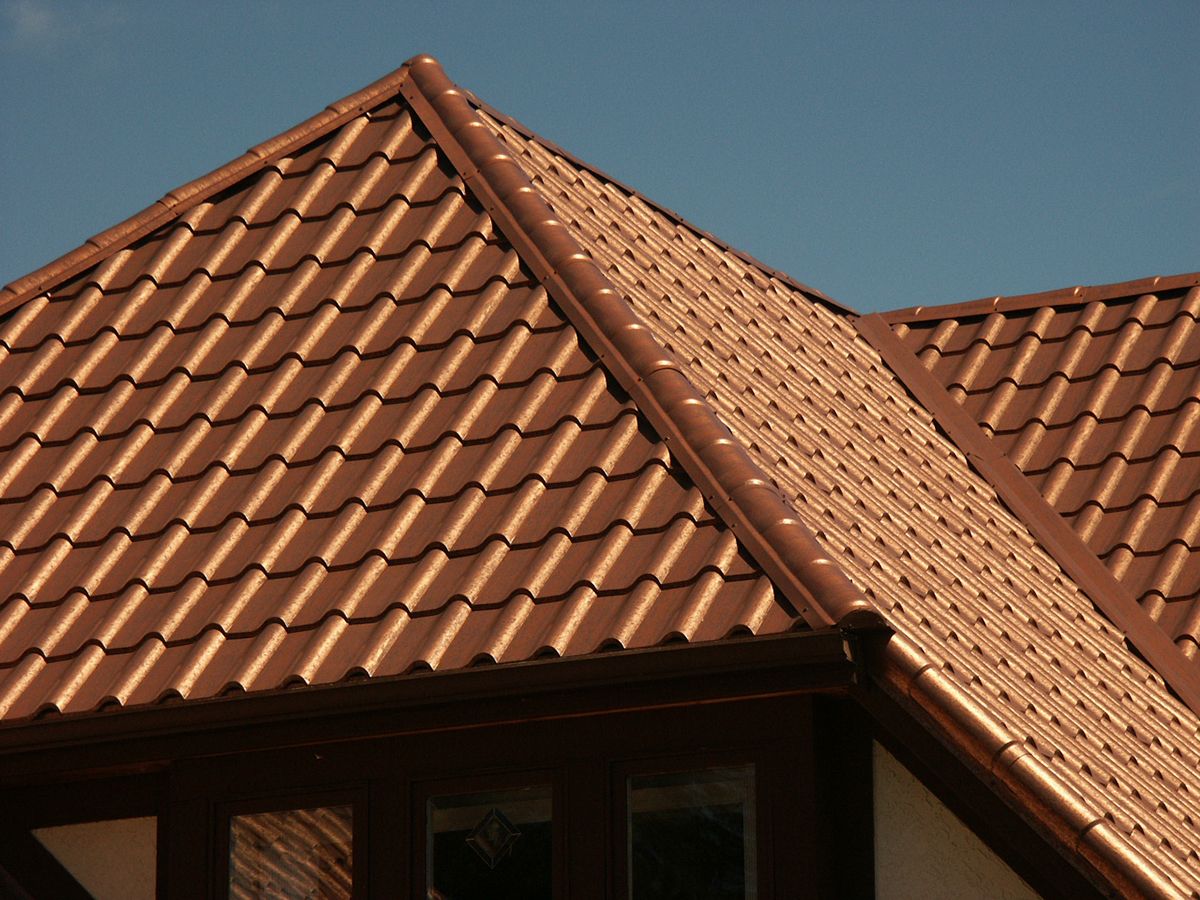
Installation of composite tiles
Before starting installation work, make sure that:
- The roof slope has an inclination angle of at least 15-18 degrees. Otherwise, oblique streams of rain may fall under the roof.
- Rafters are firmly attached to the walls, but have the necessary degree of freedom to compensate for seasonal fluctuations in the size of wood.
- Purchased material is enough to carry the roof outside the wall by 0.5 - 1.8 meters.
If the roof has a minimum angle of inclination, it is better to lay an additional waterproofing layer.
Check with the seller the necessary parameters of the lathing for the selected material.
Installation of this type of flexible tile begins with fixing the cornice board. Then, with the help of self-tapping screws or a pneumatic gun, the composite sheets are fixed, starting from the side of the cornice. For work, it is better to pick up galvanized self-tapping screws, painted to match the tiles. To cover the ridge, special sheets are used that have a fold in the middle.
The roof of the house, covered with tiles, looks respectable, thorough, and at the same time cozy, therefore this material has an increasing number of adherents among both self-taught summer residents and professional developers.
